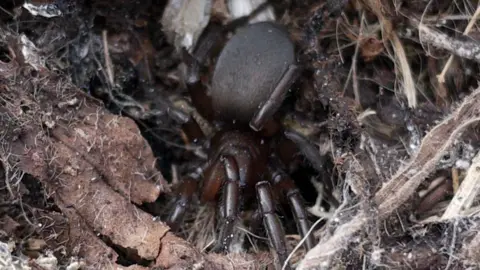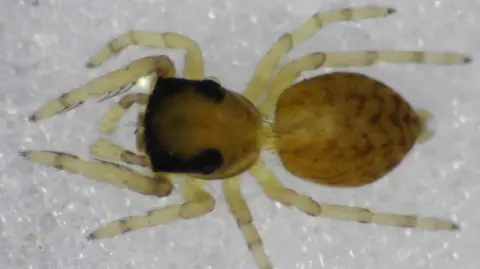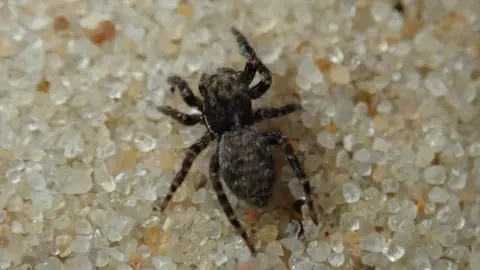Survey finds 55 spider species at nature reserve
 British Arachnological Society/James McGill
British Arachnological Society/James McGillRare spiders are among 55 different species of athropods that have been found living at a nature reserve.
The British Arachnological Society, a charity dedicated exclusively to spiders and their relatives, conducted research at Orford Ness near Orford in Suffolk.
Of the 55 spider species, the National Trust site was found to be the home to 12 that are nationally rare or scarce.
The Neon pictus species, which has only been spotted in six other British locations, was found for the first time at Orford Ness, which Matt Wilson of the National Trust was pleased to hear.
 British Arachnological Society/Richard Gallon
British Arachnological Society/Richard Gallon"It’s great to have identified a new species of spider on Orford Ness, along with confirming that the other rare species last recorded in the early 2000’s can still be found here," Mr Wilson, countryside manager for the Suffolk and Essex coast, said.
"Whilst the photographs we have may make them look fierce, many are so small that they were unlikely to have been found by non-experts and their equipment."
The Neon pictus is typically only found in shingle habitats, and the females typically only measure at about 3mm in length.
Research at the site was conducted over two visits, and five nationally rare species of spider were recorded along with seven nationally scarce species.
A rare Gnaphosa lugubris spider was found, and from the numbers counted, experts believed Orford Ness could be home to several thousand of them.
 British Arachnological Society/Richard Gallon
British Arachnological Society/Richard GallonBen McCarthy, head of nature conservation and restoration ecology at the National Trust, said the results of the survey were "brilliant to see".
"Unlike most of our sites, Orford Ness has a relatively short history of biological recording, as it was largely closed to the public until the 1990s when the National Trust acquired it," he added.
"Since then, its importance keeps on growing, and especially for its fantastic invertebrate fauna, including these wonderful spiders.
"It’s great to see that the careful management of the site’s habitats - from shingle to saltmarsh to grasslands to wetlands - support so many of these often maligned but important species."
Orford Ness is Europe's largest shingle spit. It consists of delicate shingle ridges and valleys as well as reed marshes, mud flats and brackish lagoons.
You may also be interested in:
Follow Suffolk news on BBC Sounds, Facebook, Instagram and X.
